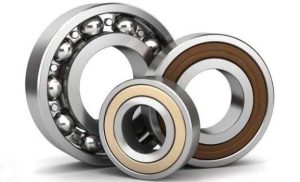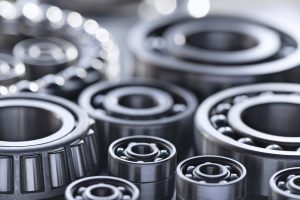When it comes to wheel bearings, one crucial decision mechanics and vehicle owners must make is whether to choose sealed or serviceable bearings. Both types play the same essential role — ensuring smooth wheel rotation and supporting vehicle loads — but they differ in design, maintenance requirements, and long-term performance.
In this article, we’ll explore the differences between sealed and serviceable bearings, their advantages and disadvantages, and how to care for each type. Whether you’re driving a daily commuter, an off-roader, or a track car, this guide will help you choose wisely — and maintain your setup for maximum longevity.
If you’re ready to replace or upgrade, Buy Hub & Bearings online for fast delivery and guaranteed fitment.

What’s the Difference?
| Feature | Sealed Bearings | Serviceable Bearings |
|---|---|---|
| Design | Factory-sealed unit, not meant to be opened | Open or partially shielded, can be cleaned and re-greased |
| Lubrication | Pre-greased and sealed for life | Requires periodic lubrication |
| Durability | Good in clean environments | More resilient if well-maintained |
| Maintenance | No maintenance needed | Needs regular inspections and greasing |
| Replacement | Entire unit replaced when worn | Bearings can be cleaned, re-greased, reused |
| Use Cases | Modern vehicles, daily driving | Heavy-duty use, motorsport, off-road |
Pros and Cons
Sealed Bearings:
Pros:
-
Low maintenance: Perfect for daily drivers who don’t want the hassle.
-
Clean design: Completely enclosed, protecting against dirt and moisture.
-
Quick replacement: Typically swapped as a complete hub assembly.
-
Consistent performance: Factory-set tolerances reduce installation error.
Cons:
-
Non-serviceable: Once the seal fails or grease degrades, the whole bearing must be replaced.
-
Heat limitations: May degrade faster under extreme temperatures.
-
More expensive to replace: Full hub unit replacement can cost more long-term.
Serviceable Bearings:
Pros:
-
Reusable: With proper care, they can last longer than sealed units.
-
High load capacity: Can be packed with specialty grease suited for specific driving needs.
-
Ideal for motorsport and off-road: Easier to inspect and maintain between races or events.
-
Cost-effective: Bearings themselves are usually cheaper than full hub units.
Cons:
-
Maintenance-intensive: Needs regular greasing and adjustment.
-
Not sealed: Prone to contamination if not cleaned and lubricated properly.
-
Installation skill required: Improper setup can cause premature wear.
When to Choose Which?
| Driving Style/Condition | Best Bearing Type | Why |
|---|---|---|
| Daily driving (city/highway) | Sealed | Low maintenance, clean environment |
| Towing/Heavy Loads | Serviceable | Custom grease and high load durability |
| Track racing / Autocross | Serviceable | Allows tuning and inspection after runs |
| Off-roading / Mud driving | Serviceable | Easier to clean and repack after abuse |
| Cold climates / Snow | Sealed | Resists water ingress and salt damage |
Maintenance Tips
Sealed Bearings
-
Inspect for signs of failure:
-
Growling or humming noise while driving
-
Wobble or play in the wheel
-
ABS warning light triggered
-
-
Do not attempt to open or repack:
Once contaminated or noisy, replacement is the only option. -
Replace in pairs (left/right):
If one side fails, the other may follow soon due to similar wear.
Serviceable Bearings
-
Greasing intervals:
-
Every 15,000–30,000 km depending on use
-
After water crossings or mud driving
-
Before and after track days
-
-
Repacking process:
-
Clean with brake cleaner or solvent
-
Let dry fully
-
Pack with high-temp grease using a bearing packer or by hand
-
Reinstall and torque to manufacturer spec
-
-
Signs of wear:
-
Clicking or grinding during rotation
-
Discoloration or scoring on rollers/races
-
Loose fitment on the hub/spindle
-
-
Use the correct grease:
-
High-temp wheel bearing grease for most vehicles
-
Moly grease for high-load or racing applications
-
Marine-grade for wet or humid environments
-
Component Lifespan Comparison
| Use Type | Sealed Bearings | Serviceable Bearings |
|---|---|---|
| City / Highway | 120,000 – 160,000 km | Up to 200,000 km with maintenance |
| Towing / Hauling | 80,000 – 100,000 km | 100,000+ km, regularly greased |
| Track / Racing | 20,000 – 50,000 km | 30,000 – 70,000 km, frequently serviced |
| Off-road / Mud | 30,000 – 60,000 km | 40,000 – 80,000 km, cleaned often |
DIY or Pro Installation?
| Task | Sealed Bearings | Serviceable Bearings |
|---|---|---|
| Installation Ease | Easier, bolt-on assembly | Requires preload adjustment |
| Tools Needed | Basic socket/wrench set | Torque wrench, bearing packer, press (optional) |
| Alignment Needed? | Sometimes (if hub replaced) | Rarely, unless tied to suspension change |
Where to Get High-Quality Bearings

When you’re ready to upgrade or replace your hub bearings — whether sealed or serviceable — go for trusted brands and reliable delivery.
Buy Hub & Bearings online to get factory-fit or performance-grade components shipped fast and guaranteed to match your vehicle’s specs.
Final Thoughts
Both sealed and serviceable bearings have their place in the automotive world. For the average driver, sealed bearings offer ease and reliability. For enthusiasts, off-roaders, or anyone who values tunability and rugged durability, serviceable bearings provide long-term control and flexibility.
No matter which you choose, proper installation, inspection, and replacement timing are crucial for maintaining safety, smooth handling, and wheel integrity.
Keep your ride rolling right — and your maintenance under control.